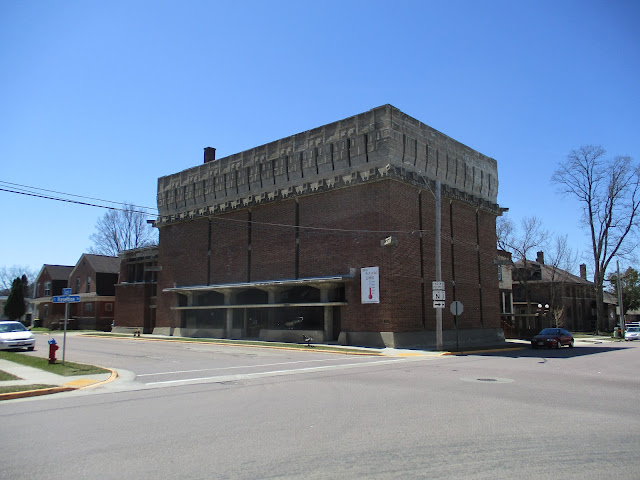This site consists of two landmark structures in Richland Center, Wisconsin connected by a shared canopy. Local entrepreneur, Albert Delvino German, built the first warehouse on Hazeltine Street in 1912 to house his wholesale business. His early commercial success lead to his most lasting achievement, constructing the innovative 4 story warehouse on Church Street designed by master architect Frank Lloyd Wright.
Its days as a warehouse are long past, and officials here are trying to convert the building into a home for events and perhaps artists, small businesses and a museum. The rooftop could be used for special events and include a bar with sweeping views of the downtown and surrounding hills that help define the Driftless Area. The basement could be the perfect spot for racks of aging Gouda, cheddar, Emmentaler and other cheeses, or perhaps barrels of whiskey from southwest Wisconsin artisans clamoring for aging space.
There is arguably no bigger name in architecture than Wright, who was born in Richland Center and went on to design buildings around the world from his studios at Taliesin in nearby Spring Green, Wisconsin.
The same year he designed the A.D. German Warehouse, Wright also sailed to Tokyo where he designed the Imperial Hotel. Two years earlier, in 1913, he designed Midway Gardens, an indoor and outdoor entertainment center in the Hyde Park neighborhood of Chicago. Of those three buildings, only the warehouse in Richland Center remains and is the only example from that decade “in which Wright used sculptural ornamentation so extensively,” according to the Frank Lloyd Wright Wisconsin Heritage Tourism Program.
The warehouse, built concurrently with the Imperial Hotel, features tapered interior columns and is structurally sound. It was constructed on the site of the former Badger Hotel and is adjacent to a warehouse German built in 1912 that is also owned by the conservancy.
German, who supplied area mercantiles with inventory, is believed to have commissioned Wright to design the building after Wright owed thousands of dollars to German, who budgeted $30,000 for the project but spent more than $125,000. German lost the warehouse to bankruptcy in the 1920s, got it back in 1935 and lost it again a few years later before leaving town. That led to a series of owners over the years until Harvey Glanzer bought the building in the 1970s and a few years later added a gift shop, tea room and a 42-seat theater on the first floor.
Glanzer died in 2011, and his estate sold the building for $90,000 to Glenn Schnadt, a retired banker, who ultimately gave the building to the conservancy.
Restoration efforts and a vision for the future can be found on the buildings website.




















No comments:
Post a Comment